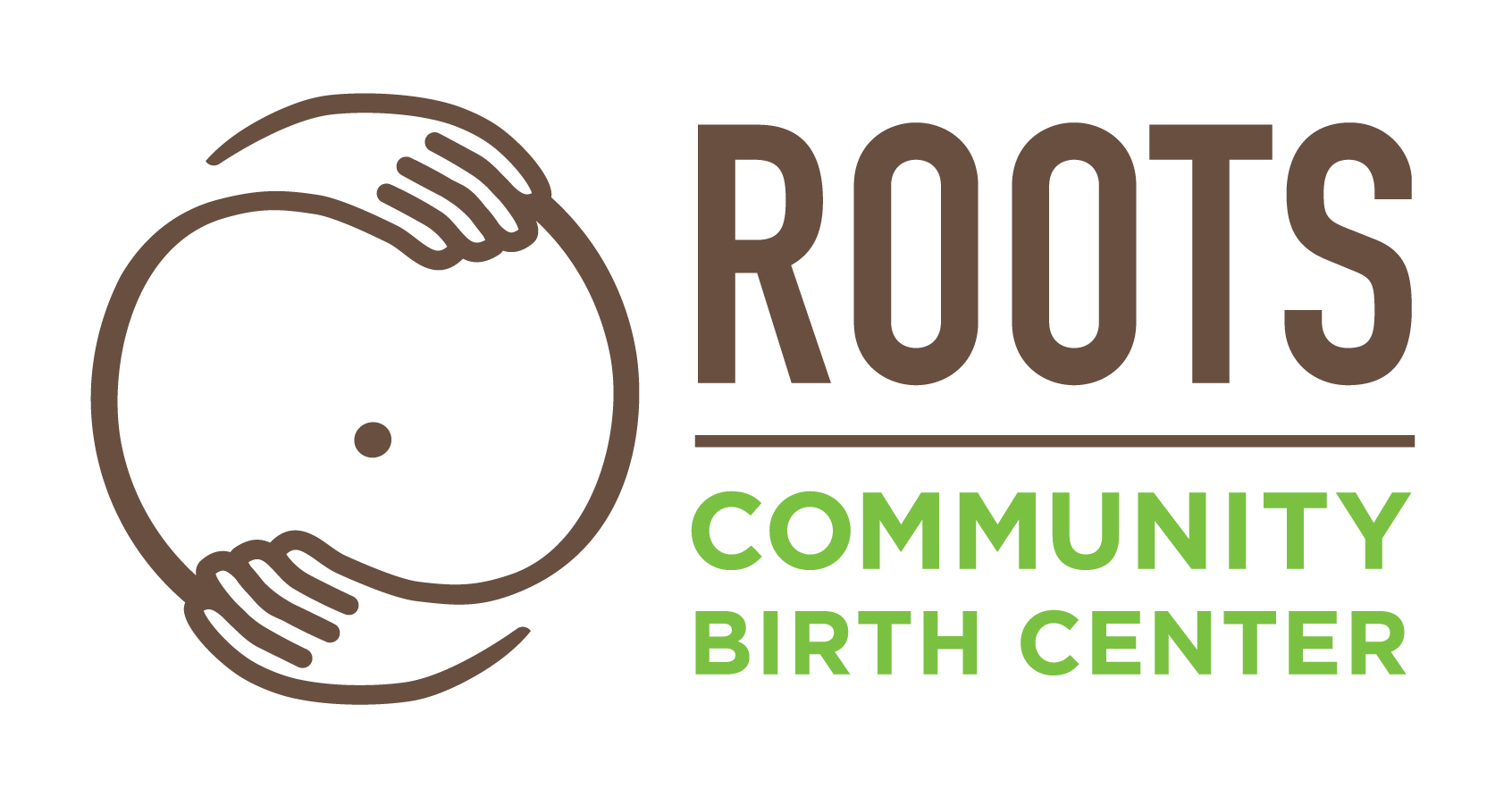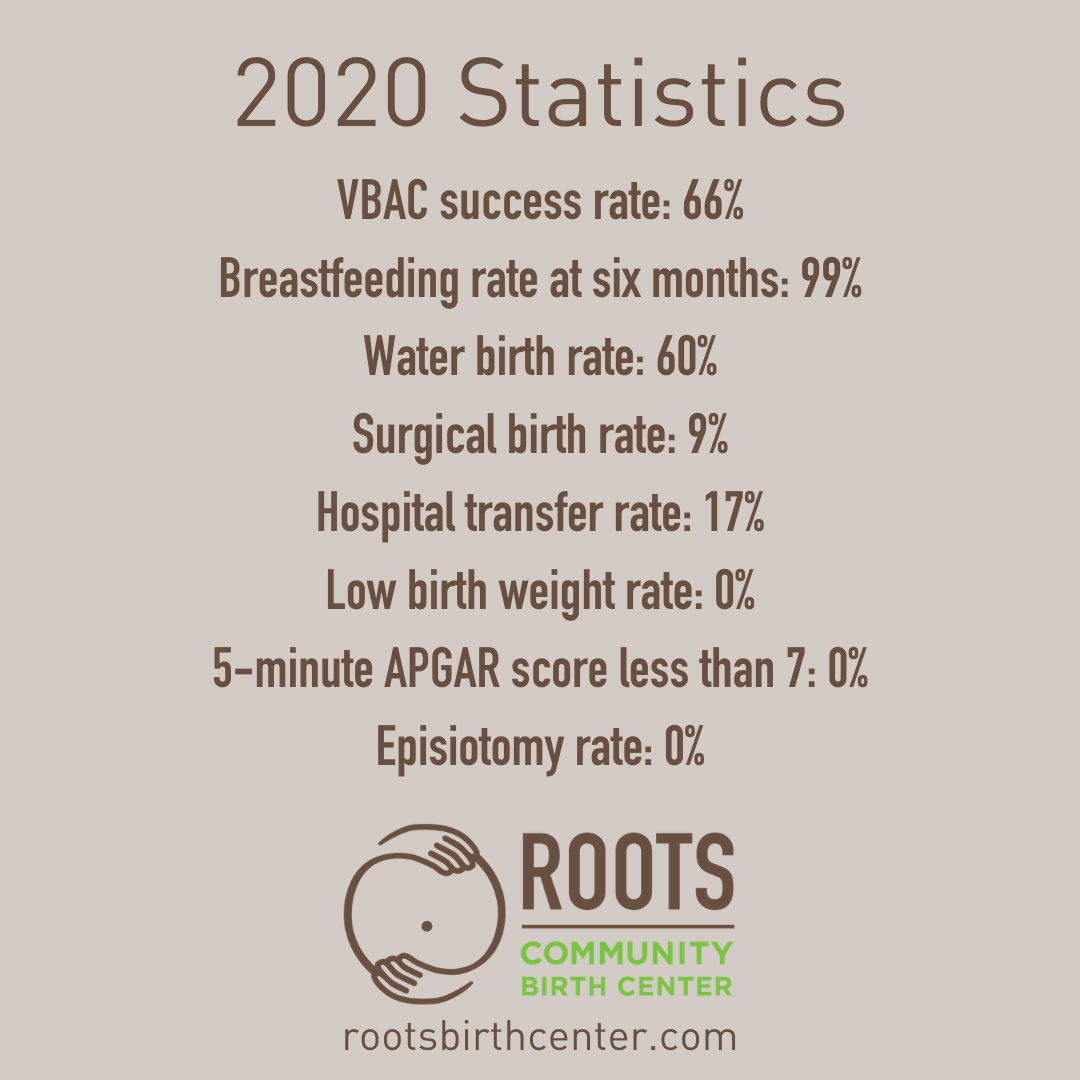Birth Center Statistics in Minneapolis: Here’s the Data from Roots for 2020
At Roots Community Birth Center, we are committed to transparency. That’s why we think it’s important to share our annual statistics. Our most recent data is from 2020, and as we all know, 2020 was a hard year.
A global pandemic.
A national racial justice movement.
A local uprising in Minneapolis.
As we look at the Roots Birth Center statistics from 2020, we recognize that they are not as good as previous years. We wondered if we should release this data so publicly, but we have to fall back on our values. Since one of those is honesty, we are sharing our statistics.
What are the Roots Birth Center Statistics from 2020?
VBAC Success Rate: 66%
Of the clients who planned a vaginal birth after cesarean (VBAC), 66% birthed their babies vaginally at the birth center. Overall, combining our historical data our VBAC success rate at Roots is 96%.
Breastfeeding Rate: 99%
By six months postpartum, 99% of clients were still nursing their babies. This is an incredibly high number, well above the most recent national percentage of 58.3.
Water Birth Rate: 60%
Sixty percent of clients birthed their babies in one of our birthing tubs. Water immersion can serve as an effective way to cope with the discomfort of contractions.
Surgical Birth Rate: 9%
After being transported to a hospital, 9% of clients delivered their babies by C-section. This is considerably lower than the national average of 31.7 percent and even below the long-standing recommendation from the World Health Organization to have a C-section rate of 10-15%.
Hospital Transfer Rate: 17%
During labor or postpartum, 17% of clients transferred to a hospital. Of these, 97% were for non-emergency reasons, such as prolonged labor and the desire for pain relief. Three percent were for emergencies.
Low birth weight rate: 0%
None of the babies born at Roots had a birth weight below five pounds, eight ounces. Some babies who are born with a low birth weight experience health problems, including trouble gaining weight and fighting off infections.
APGAR score less than 7: 0%
Five minutes after birth, none of the newborns born at Roots had an APGAR score lower than 7. Typically, 7 or above indicates a baby is in good health.
Episiotomy rate: 0%
No birthing parents had an episiotomy during the birth experience at Roots. This is a surgical cut made at the opening of the vagina during childbirth.
How Do the Roots Birth Center Statistics Compare with National Averages?
While our 2020 numbers are not what we had hoped for, we know that they are better than what you will find in hospitals. And they are similar to data from the National Birth Center Study.
We believe there are a couple of factors that affected our 2020 Roots Birth Center statistics. First, following the murder of George Floyd, there was an uprising in Minneapolis, and our birth center had to close for a few days. At Roots, we serve a population that was directly impacted and involved in the uprising, so it’s not surprising that there were some pregnant people and birthing parents who had higher blood pressure or anxiety. We are whole people, and environmental, cultural, societal, and emotional factors affect our health.
Second, the pandemic, including the widespread shutdowns in the spring of 2020, contributed to the mental and emotional well-being of birthing families. Again, stress and worry influence health, so it makes sense that being quarantined would coincide with statistics that are not as desirable as in past years.
Why Should You Know Your Birth Center’s Statistics?
When you make decisions about your prenatal care and outline your birth preferences, it’s important to consider the statistics from your birthing facility. What happens during pregnancy and birth can have lasting effects on your health and your baby’s well-being. Pay attention to numbers that shed light on how often the facility transfers birthing parents to hospitals and those that reflect the health of the gestational parent and the newborn baby.
Looking at the data from prospective birthing facilities will help you choose a location that aligns with your goals. It’s one of the first steps you can take toward being an active participant in your reproductive care, making sure the healthcare team is right for you and your family. Transparency in sharing birth center statistics is a good indication that your provider will discuss all options, offer evidence-based information, and trust your decisions.
We want you to have a healthy pregnancy and an empowering birth. At Roots, we are here even when it is hard, just like it was last year. That meant the numbers for 2020 were going to be hard. They reflect the energy of where we’re living. Still, we see Roots as a beautiful cross-section of people, and we are dedicated to serving our community — with honesty and transparency.
To learn more about reproductive care at Roots, set up a free consultation by calling us at 612-338-2784, scheduling a tour, or filling out our form!

